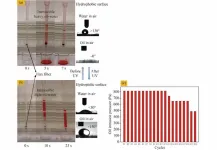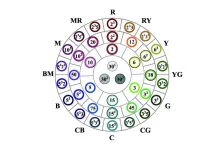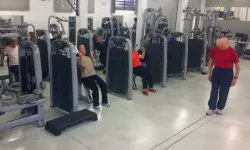(Press-News.org) • The blood-brain barrier prevents most drugs from reaching brain tumors.
• A new method using nanoparticles transported drugs across this barrier in mice.
• The nanoparticles target a protein on tumor blood vessel cells called P-selectin.
• The nanoparticles improved the treatment in a model of aggressive pediatric brain cancer
Brain tumors are notoriously hard to treat. One reason is the challenge posed by the blood-brain barrier, a network of blood vessels and tissue with closely spaced cells. The barrier forms a tight seal to protect the brain from harmful substances, but it also prevents most drugs from getting to brain tissue. This severely limits therapies that can be used for brain tumors.
Now, a Memorial Sloan Kettering Cancer Center (MSK) team led by Sloan Kettering Institute biomedical engineer Daniel Heller, PhD, in collaboration with Praveen Raju, MD, PhD, a pediatric neurologist at Mount Sinai Medical Center, may have found a way to carry drugs across the blood-brain barrier using nanoparticles — tiny objects with diameters one-thousandth that of a human hair. The researchers showed that this approach could work in mouse models of medulloblastoma, the most common malignant (cancerous) pediatric brain tumor.
Here, Dr. Heller explains how this method, reported March 2 in Nature Materials, could potentially improve treatment for medulloblastoma, other brain tumors, and other brain diseases.
How are nanoparticles used to target tumors across the blood-brain barrier?
In 2016, my laboratory found that a protein called P-selectin is an especially good target on cancer blood vessels for steering nanoparticles, loaded with drugs, to tumors. P-selectin is abundant in blood vessels that feed tumors. We found a substance that has a natural affinity for P-selectin. It’s called fucoidan, a polysaccharide (a chain of sugar molecules) that is widely available and extracted from brown seaweed from the Sea of Japan. Fucoidan binds to P-selectin.
In the 2016 study, we filled fucoidan nanoparticles with different cancer drugs and showed that the nanoparticles selectively attached to cancer sites, including metastatic tumors in the lungs of mice. This showed the promise of targeting P-selectin to treat cancer.
How does targeting P-selectin get drugs across the blood-brain barrier?
The blood vessels in the blood-brain barrier are lined with a layer of cells that are packed very close together. We discovered that when the nanoparticle binds to P-selectin, it triggers a process called transcytosis, a mechanism that shuttles a particle across the cells lining the blood vessel wall. This allows something inside the blood vessel to pass through the vessel wall to reach the surrounding brain tissue. We found we could exploit this natural mechanism to get drug-loaded nanoparticles across the blood-brain barrier, which has been very difficult to achieve.
This could be an important step in improving treatment of brain tumors and other brain diseases. People have tried different ways to disrupt the barrier, like using ultrasound to poke tiny holes. For many reasons that are probably obvious, these methods carry risks. But now we may have a way to get around some of these risks.
How did you end up testing this approach on medulloblastoma?
A pediatric oncology fellow working in our lab, Hiro Kiguchi, MD, was studying the use of these nanoparticles for pediatric cancers. He presented our work to scientists and physicians in MSK’s pediatrics department, and Praveen, who was working here at Memorial Sloan Kettering and Weill Cornell Medicine at the time, asked: “Could you could get these nanoparticles across the blood-brain barrier?” I was skeptical because even though nanoparticles are small, they still are bigger than drugs or proteins, and the barrier is so tight.
But it turned out Praveen had developed a mouse model for medulloblastoma. This was ideal for testing our technology because the blood-brain barrier is intact in this model, unlike many other brain tumor models, which have leaky barriers. We collaborated with Praveen, who is a co-corresponding author on the study, to put this nanoparticle approach to the hardest test.
How did you demonstrate that the nanoparticles can reach the medulloblastoma in mice?
We loaded the nanoparticles with a drug called vismodegib, which targets the Sonic hedgehog signaling pathway. Sonic hedgehog proteins play an important role in promoting cancers. Vismodegib has already been approved for treating basal-cell carcinoma, the most common skin cancer, and the drug had been tested for medulloblastoma and other cancers driven by Sonic hedgehog proteins. However, this drug resulted in significant bone-related side effects when it was tried in pediatric medulloblastoma patients.
We found this side effect does not occur when we put the drug into nanoparticles. We injected vismodegib-loaded nanoparticles into the tail vein of the medulloblastoma mouse models and let it circulate to see if it passed through the barrier. Using special imaging, we could see the particles accumulating at the site of the medulloblastoma tumors, where P-selectin is prominent, and not in normal brain regions or other parts of the body. Daniel Tylawsky, a PhD student in our laboratory, discovered that particles that target P-selectin use the transcytosis transport route to cross the blood vessels to reach the tumors.
Using Radiation To Increase Levels of P-Selectin
One key to making this treatment effective is using radiation, which is a standard therapy for both children and adults with brain tumors. Radiotherapy boosts levels of P-selectin in tumors. This means we can direct radiation to give the nanoparticles more P-selectin to grab onto in the tumor so more nanoparticles, and their drug cargo, will end up there. In the case of medulloblastoma, we could give the radiotherapy to the specific location in the brain before injecting the drug into the vein. There are many cases where we don’t want drugs to go to other parts of the brain even if we get them across the barrier, so using radiation allows us to focus a drug to the target area.
What’s Next for Treating Diseases Beyond the Blood-Brain Barrier?
1. Test the technology in people.
We know fucoidan is safe. You can buy it at a health food store, and some people claim it boosts immune function and reduces inflammation. Nanoparticle-based fucoidan therapy would not necessarily replace surgery, which is still the standard treatment for medulloblastoma. But it could improve the effectiveness of many classes of cancer drugs to prevent the cancer from returning, allow the use of lower doses of radiation therapy to the brain, and also reduce many drug side effects.
2. Use therapies in the brain cancers that have never been tried before.
Currently, the few drugs used to treat brain tumors are those that get through the blood-brain barrier. But now, we may have a much wider range of drugs that can reach brain tumors effectively. From our studies so far, it seems that it doesn’t matter what drug you put inside the particle; we can get it across the barrier.
3. Treat other brain cancers, brain metastases, and brain diseases.
Although this approach first could be used against medulloblastoma, it has broader potential applications. Most brain tumors occur in adults, so if the therapy works against other brain malignancies, including glioblastoma or brain metastases, it could benefit many people. We also could use the approach to deliver drugs to treat noncancerous brain diseases.
This work was supported in part by NCI (R01-CA215719), NINDS (R01-NS116353), the Cancer Center Support Grant (P30-CA008748), the National Science Foundation CAREER Award (1752506), the American Cancer Society Research Scholar Grant (GC230452), Unravel Pediatric Cancer, Emerson Collective, the Pershing Square Sohn Cancer Research Alliance, The Hartwell Foundation, the Expect Miracles Foundation - Financial Services Against Cancer, MSK’s Cycle for Survival’s Equinox Innovation Award in Rare Cancers, the Alan and Sandra Gerry Metastasis Research Initiative, Mr. William H. Goodwin and Mrs. Alice Goodwin and the Commonwealth Foundation for Cancer Research, the Experimental Therapeutics Center, the Imaging & Radiation Sciences Program, and the Center for Molecular Imaging and Nanotechnology of Memorial Sloan Kettering Cancer Center.
Dr. Heller is a cofounder and officer with equity interest of Goldilocks Therapeutics Inc., Resident Diagnostics, Inc., and Lime Therapeutics, Inc., as well as a member of the scientific advisory board of Concarlo Therapeutics, Inc., Nanorobotics Inc., and Mediphage Bioceuticals, Inc. Dr. Heller is a co-inventor of a related patent, “Fucoidan nanogels and methods of their use and manufacture” US patent #9,737,614 issued July 7, 2016 to Memorial Sloan Kettering Cancer Center.
END
Getting drugs across the blood-brain barrier using nanoparticles
2023-03-02
ELSE PRESS RELEASES FROM THIS DATE:
Insights into the evolution of the sense of fairness
2023-03-02
Göttingen, March 2, 2023. A sense of fairness has long been considered purely human – but animals also react with frustration when they are treated unequally by a person. For instance, a well-known video shows monkeys throwing the offered cucumber at their trainer when a conspecific receives sweet grapes as a reward for the same task. Meanwhile, researchers have observed similarly frustrated reactions to unfair rewards in wolves, rats and crows. However, researchers still debate the reasons for this behavior: Does the frustration really stem from a dislike of unequal treatment, or is there another explanation? In a study with long-tailed ...
Security vulnerabilities detected in drones made by DJI
2023-03-02
Researchers from Bochum and Saarbrücken have detected security vulnerabilities, some of them serious, in several drones made by the manufacturer DJI. These enable users, for example, to change a drone’s serial number or override the mechanisms that allow security authorities to track the drones and their pilots. In special attack scenarios, the drones can even be brought down remotely in flight.
The team headed by Nico Schiller of the Horst Görtz Institute for IT Security at Ruhr University Bochum, ...
Coastal water pollution transfers to the air in sea spray aerosol and reaches people on land
2023-03-02
New research led by Scripps Institution of Oceanography at UC San Diego has confirmed that coastal water pollution transfers to the atmosphere in sea spray aerosol, which can reach people beyond just beachgoers, surfers, and swimmers.
Rainfall in the US-Mexico border region causes complications for wastewater treatment and results in untreated sewage being diverted into the Tijuana River and flowing into the ocean in south Imperial Beach. This input of contaminated water has caused chronic coastal water pollution in Imperial ...
A bridge between hydrophobicity and hydrophilicity of flax fiber: A breakthrough in the multipurpose oil-water separation field
2023-03-02
The large number of oily wastewater discharges and oil spills are bringing about severe threats to environment and human health. Corresponding to this challenge, a number of functional materials have been developed and applied in oil-water separation as oil barriers or oil sorbents. These materials can be divided into two main categories which are artificial and natural.
Natural materials such as green bio-materials are generally low cost and abundant with biological degradability, which are also regarded as promising alternatives for oil-water separation ...
CityU scholars unify color systems using prime numbers
2023-03-02
Existing colour systems, such as RGB and CYMK, are all text-based and require a large range of values to represent different colours, making them difficult to compute and time-consuming to convert. Recently, researchers from City University of Hong Kong (CityU) made a breakthrough by inventing an innovative colour system, called “C235”, based on prime numbers, enabling efficient encoding and effective colour compression. It can unify existing colour systems and has the potential to be applied in various applications, like designing an energy-saving LCD system and colourizing DNA codons.
Currently, ...
UCD Archaeologist receives prestigious Dan David Prize for research on the invisible workforce behind ancient forms of art
2023-03-02
The Dan David Prize, the largest history prize in the world, has announced University College Dublin (UCD) Archaeologist, Dr Anita Radini, as one of nine recipients for 2023.
Each of the winners - who work in Kenya, Denmark, Israel, Canada, the US and Ireland - will receive $300,000 (USD) in recognition of their achievements as emerging scholars and to support their future endeavours in the study of the human past. Dr Radini is the first in Ireland to receive this award.
“Our winners represent the next generation of historians,” said Ariel ...
Putting a price tag on the amenity value of private forests
2023-03-02
When it comes to venturing into and enjoying nature, forests are the people’s top choice – at least in Denmark. This is also reflected in the sales prices of properties with private forest. But beyond earnings potential, this first study of its kind, conducted by the University of Copenhagen, puts a price tag on the so-called amenity value of Danish private forests.
Forests have a nearly therapeutic effect on humans. Perhaps that is why eight out of ten of Danes have wandered in the woods over ...
The map to human and animal behavior
2023-03-02
What are humans? What are animals? And what makes humans unique? The comparative psychologist Fumihiro Kano has set himself a life goal to answer those questions. On 28 February 2023 it was announced that the scientist from the Cluster of Excellence “Centre for the Advanced Study of Collective Behaviour” (CASCB) at the University of Konstanz will receive the Manfred Fuchs Prize from the Heidelberg Academy of Sciences and Humanities of the State Baden-Württemberg for his interdisciplinary work in animal behaviour research.
Photo gallery for the article: https://www.campus.uni-konstanz.de/en/science/the-map-to-human-behaviour
Fumihiro ...
Resistance training improves sleep quality and reduces inflammation in older people with sarcopenia
2023-03-02
Sarcopenia is the decline of skeletal muscle mass with age, leading to loss of muscle strength (to move objects, shake hands etc.) and performance (walking and making other routine movements effectively). It involves chronic inflammation and is associated with cognitive alterations, heart disease and respiratory disorders. In short, it affects the quality of life, reducing independence and increasing the risk of injury, falls and even death.
Sarcopenia affects 15% of adults over the age of 60 and 46% of those over 80. Sleep disorders are also common in these age groups. The aging ...
Bald eagles aren’t fledging as many chicks due to avian influenza
2023-03-02
Bald eagles are often touted as a massive conservation success story due to their rebound from near extinction in the 1960s.
But now a highly infectious virus may put that hard-fought comeback in jeopardy.
Published in Nature’s Scientific Reports, new research from the University of Georgia showed highly pathogenic avian influenza, also known as H5N1, is killing off unprecedented numbers of mating pairs of bald eagles.
“Even just one year of losses of productivity like we’ve documented regionally is very concerning and could have effects for decades to come if representative of broader regions,” said ...







